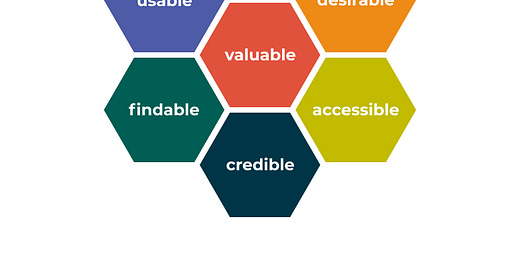The Seven Pillars of Exceptional UX Design: Understanding UX Honeycomb
In digital product design, creating a user experience (UX) that resonates with your audience is paramount. Peter Morville’s User Experience Honeycomb offers a timeless framework for ensuring your design hits the mark. This classic diagram outlines the seven essential aspects of UX that every designer should consider.
Useful: If the product, service, or feature fulfills a specific need or purpose for your target customers, it can be considered useful.
Usable: Usefulness alone isn’t enough; the product must also be usable. Usability is about how effectively and efficiently users can achieve their goals. How intuitive is the interface? How many steps does it take to complete a task? A usable design minimizes friction and maximizes ease of use.
Findable: Navigation plays a crucial role in UX. A product is findable when users can easily locate the information or features they need. Whether it’s a music streaming site or an e-commerce platform, the quicker users can find what they’re looking for, the better their experience will be.
Accessible: Accessibility ensures that your product is usable by everyone irrespective of the platform they are on, including people with disabilities. Designing with accessibility in mind means considering a range of abilities and making sure your product is inclusive.
Credible: Credibility is all about trust. Users must trust that your product is reliable, ethical, and accurate. In a competitive market, even a small lapse in credibility—like frequent technical issues—can lead users to seek alternatives.
Similarly, if you run an e-commerce platform that displays reviews, make sure those reviews come from verified buyers.
Valuable: Finally, a product must deliver value—both to the user and the business. It’s about creating a win-win situation where users find the product worthwhile, and the business sees a return on investment.




